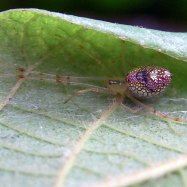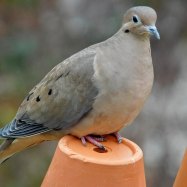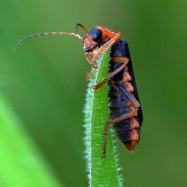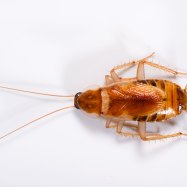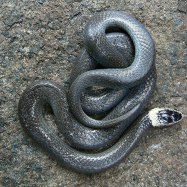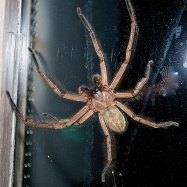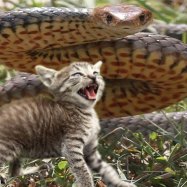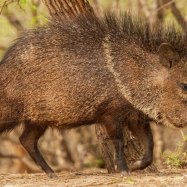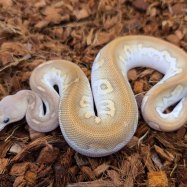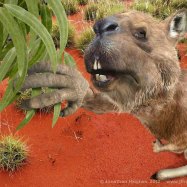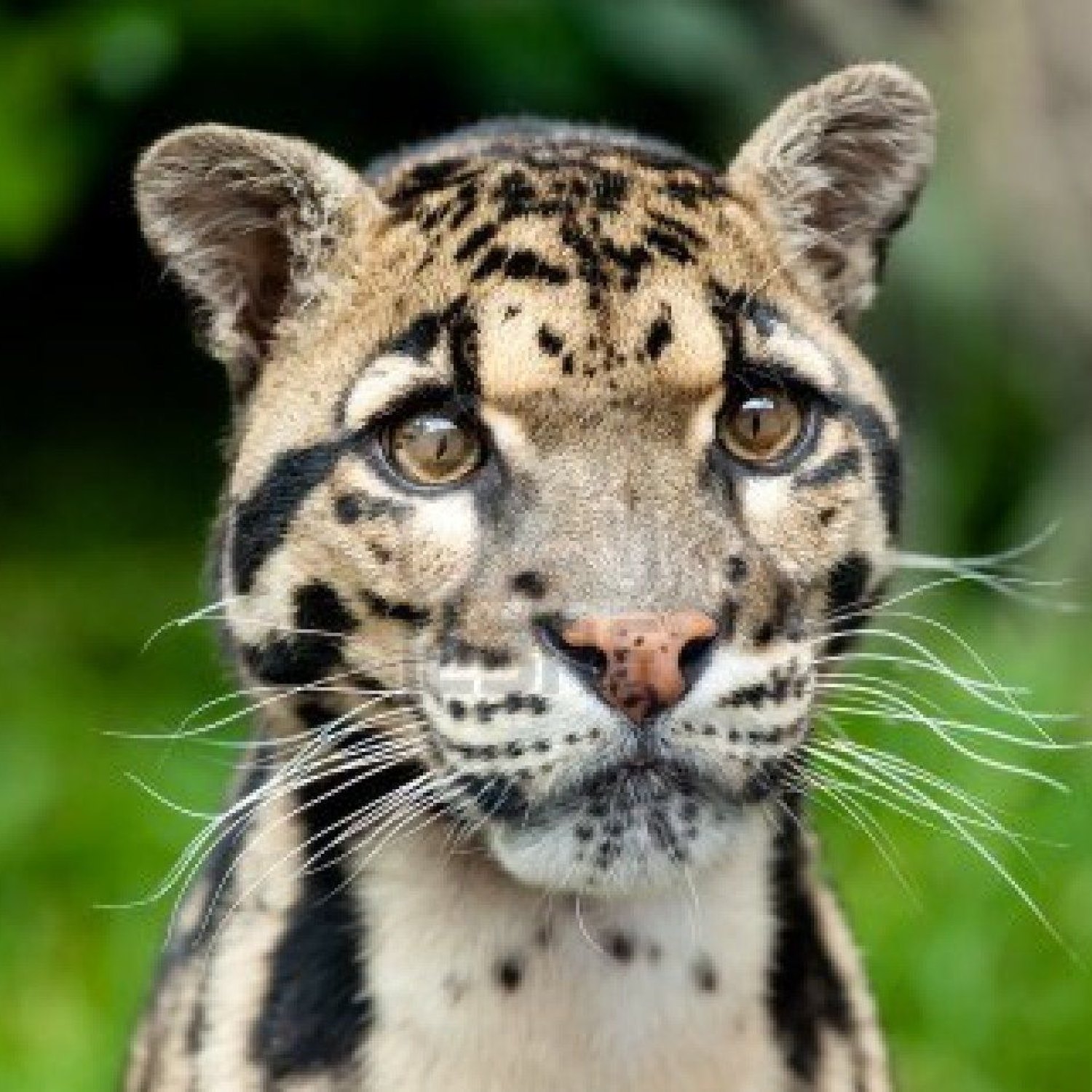
Clouded Leopard
Between 3 to 4.5 feet (90 to 137 cm) long, excluding the tail
The clouded leopard, a medium-sized felid, is a skilled climber found in countries like Myanmar, Thailand, and Borneo. With a body length of 3-4.5 feet, excluding the tail and agile body shape, it's no surprise they are masters of navigating trees in their natural habitat. #CloudedLeopard #Felidae #TreeClimber
Animal Details Summary:
Common Name: Clouded Leopard
Kingdom: Animalia
Habitat: Tropical rainforests, evergreen forests, grasslands, and mangrove swamps
Introduction
Have you ever heard of a cat that can climb trees with ease and disappear into thin air? Well, the clouded leopard is one such mysterious and elusive feline. With its distinctive coat and impressive agility, this unique cat has captured the attention of many wildlife enthusiasts. Let's dive into the world of the clouded leopard and discover what makes it a fascinating and mysterious species.The Scientific Name and Common Name
Scientifically known as Neofelis nebulosa, the clouded leopard is a medium-sized wild cat belonging to the family Felidae Clouded Leopard. Its common name, "clouded leopard," is derived from its unique fur pattern that resembles clouds or smoke.Classification
The clouded leopard belongs to the Kingdom Animalia, Phylum Chordata, Class Mammalia, and Order Carnivora. Within the family Felidae, it is placed under the genus Neofelis, along with its close relative, the Sunda clouded leopard (Neofelis diardi).Habitat and Geographical Distribution
The clouded leopard is primarily found in the dense tropical rainforests of Southeast Asia. These forests provide the perfect setting for the clouded leopard to thrive due to their high prey density and good cover for hunting. They are also known to inhabit other types of forests, such as evergreen forests, grasslands, and mangrove swamps.Clouded leopards can be found in countries such as Myanmar, Thailand, Malaysia, Laos, Cambodia, Vietnam, Borneo, Java, and Sumatra. However, their populations have significantly declined due to habitat loss and hunting, making them a vulnerable species according to the International Union for Conservation of Nature (IUCN) Red List.
Feeding Behavior
Unsurprisingly, as a member of the carnivorous family, the clouded leopard's diet mainly consists of meat Chickadee. They are skilled hunters and prey on a variety of animals, including deer, monkeys, birds, and smaller mammals like rodents and lizards. The clouded leopard feeds at night, using its excellent night vision to spot its prey. Due to their solitary nature, they usually hunt alone but have been known to team up with other clouded leopards to take down larger prey.Physical Description
The clouded leopard has a striking appearance, with its distinctive, cloud-like markings on its coat. These markings are not just for aesthetic purposes; they also provide excellent camouflage in the forest, allowing the clouded leopard to blend seamlessly into its surroundings.The clouded leopard has a medium-sized body, measuring between 3 to 4.5 feet (90 to 137 cm) in length, excluding its long tail. They have a stocky build with short legs, making them well-suited for climbing trees. Their paws are broad and padded, giving them a good grip on branches while climbing. They also have sharp, retractable claws, which they use to grasp and kill their prey.
Weight
The weight of a clouded leopard can vary significantly, with males weighing between 24 to 50 pounds (11 to 23 kg) and females ranging from 17 to 35 pounds (7 to 16 kg). This difference in weight is due to sexual dimorphism, with males being larger and heavier than females.Behavior
As elusive as they may seem, the clouded leopard is a very active and agile animal, known for its incredible climbing abilities. They are mainly arboreal, spending most of their time in the trees. They use their strong legs and sharp claws to navigate through the forest canopy and prey on animals such as monkeys and birds that also inhabit the treetops.Clouded leopards are primarily solitary but may pair up during the breeding season, which typically lasts from December to March. Females give birth to one to five cubs, which stay with them for about ten months before becoming independent.
Conservation Status
Unfortunately, clouded leopards are facing numerous threats, leading to a decline in their population. One of the primary factors is habitat loss due to deforestation and human encroachment. This has reduced their natural prey availability, forcing them to hunt domestic animals, resulting in conflicts with humans. They are also hunted for their beautiful fur and body parts, which are used in traditional medicine. Additionally, they are sometimes captured for the illegal pet trade.The clouded leopard is listed as a vulnerable species on the IUCN Red List, and their populations are declining with only around 10,000 adults remaining in the wild. Various conservation efforts, such as protected areas and anti-poaching measures, are being implemented to protect this species and prevent their extinction.
Conclusion
In conclusion, the clouded leopard is a unique and remarkable animal that often goes unnoticed due to its elusive nature. Its distinctive coat, agile climbing abilities, and solitary behavior make it a fascinating species to learn about. However, the clouded leopard is facing serious threats to its survival, and it is essential to take action to protect this beautiful and mysterious feline.So next time you hear a rustle in the trees or catch a glimpse of a cat-like figure disappearing into the forest, you now know that it could be the elusive and mysterious clouded leopard, roaming through the dense tropical rainforests of Southeast Asia.

Clouded Leopard
Animal Details Clouded Leopard - Scientific Name: Neofelis nebulosa
- Category: Animals C
- Scientific Name: Neofelis nebulosa
- Common Name: Clouded Leopard
- Kingdom: Animalia
- Phylum: Chordata
- Class: Mammalia
- Order: Carnivora
- Family: Felidae
- Habitat: Tropical rainforests, evergreen forests, grasslands, and mangrove swamps
- Feeding Method: Carnivorous
- Geographical Distribution: Southeast Asia
- Country of Origin: Myanmar, Thailand, Malaysia, Laos, Cambodia, Vietnam, Borneo, Java, and Sumatra
- Location: Clouded Leopards are found in countries like Myanmar, Thailand, Malaysia, Laos, Cambodia, Vietnam, Borneo, Java, and Sumatra.
- Animal Coloration: Distinctive, cloud-like markings on its coat, which provides excellent camouflage in the forest
- Body Shape: Medium-sized. Agile and capable of climbing trees with ease.
- Length: Between 3 to 4.5 feet (90 to 137 cm) long, excluding the tail
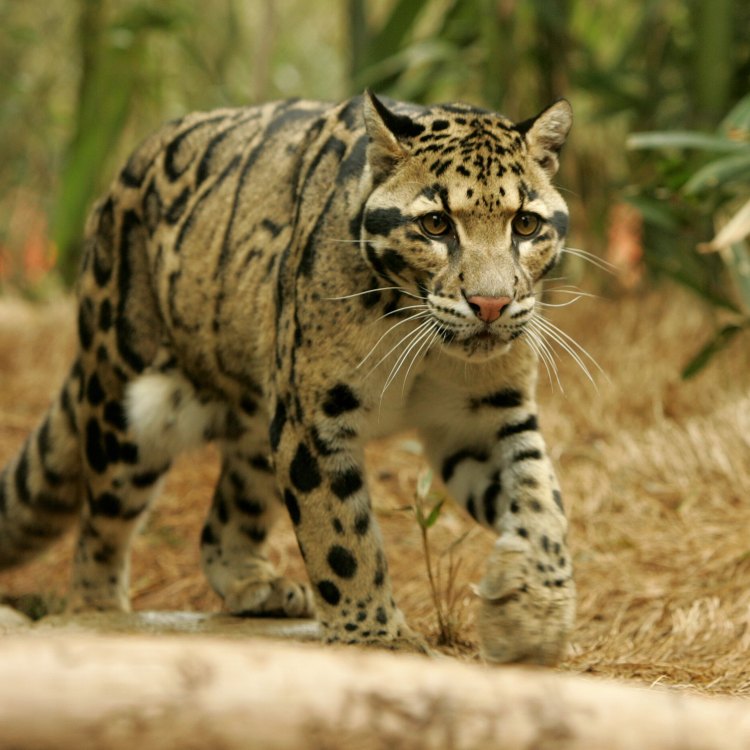
Clouded Leopard
- Adult Size: Weighs between 30 to 50 pounds (14 to 23 kg)
- Average Lifespan: Around 11 years in the wild
- Reproduction: Sexual
- Reproductive Behavior: Male and female come together only for mating purposes
- Sound or Call: Loud coughing call
- Migration Pattern: Non-migratory
- Social Groups: Solitary animals
- Behavior: Nocturnal and primarily arboreal
- Threats: Habitat loss, poaching, and illegal wildlife trade
- Conservation Status: Vulnerable
- Impact on Ecosystem: Maintain balance in the ecosystem by controlling prey population
- Human Use: Poached for its skin, bones, and body parts
- Distinctive Features: Distinct cloud-like markings on its coat, short legs, long tail, and large paws
- Interesting Facts: Clouded Leopards have the longest canine teeth relative to body size of any living felid species.
- Predator: Humans, tigers, and leopards
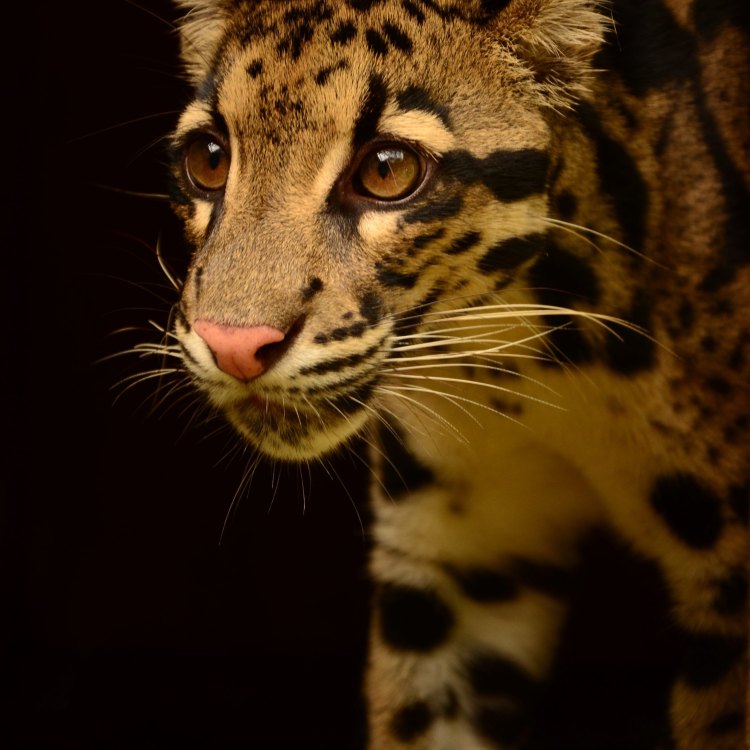
Neofelis nebulosa
The Enigmatic Clouded Leopard: A Fascinating and Vulnerable Species
The forests of Southeast Asia are home to a majestic and enigmatic creature - the Clouded Leopard. With its striking markings, unique features, and elusive nature, this elusive feline has captured the hearts of many wildlife enthusiasts.But despite its captivating appearance, the Clouded Leopard is facing numerous threats that have led to its classification as a vulnerable species. In this article, we will delve into the world of the Clouded Leopard, exploring its characteristics, behavior, and the challenges it faces in the wild PeaceOfAnimals.Com.
Adult Size and Average Lifespan
The Clouded Leopard is a medium-sized wild cat, weighing between 30 to 50 pounds (14 to 23 kg). Its body length ranges from 2 to 3 feet (60 to 90 cm) and its tail can add another 2 to 3 feet (60 to 90 cm) to its overall length.
In terms of appearance, the Clouded Leopard is distinguishable by its distinctive "cloud-like" markings on its coat, which is why it got its name. Its coat ranges from pale yellow to grayish-brown with dark patches and spots. Its short, stocky legs, long tail, and large paws make it an agile climber and jumper, well-adapted to its arboreal lifestyle.
The average lifespan of a Clouded Leopard in the wild is around 11 years. However, in captivity, some have been known to live up to 17 years.
Reproductive Behavior
Clouded Leopards are sexual and solitary animals. Unlike other wild cats, they do not form pairs or social groups Cinereous Vulture. Male and female Clouded Leopards only come together for mating purposes and then go their separate ways.
The breeding season for Clouded Leopards is typically during the months of January to March, and the gestation period is approximately 86 to 93 days. The female gives birth to a litter of 1 to 5 cubs, which are born blind. The cubs are nursed and taken care of by the mother until they are ready to leave and fend for themselves at around 10 to 12 months old.
Nocturnal and Primarily Arboreal Behavior
One of the most fascinating things about the Clouded Leopard is its behavior. These elusive cats are nocturnal, which means they are most active at night. During the day, they tend to rest on tree branches, often hidden in dense foliage.
Being highly skilled climbers, Clouded Leopards spend most of their time in the trees. They can move between the tree branches with great ease, thanks to their powerful legs and sharp claws. This arboreal lifestyle also helps them to avoid danger and hunt their prey efficiently.
Threats to the Clouded Leopard
Unfortunately, despite their impressive abilities, the Clouded Leopard is facing many threats in the wild. One of the most significant threats is habitat loss due to deforestation and human encroachment. As human populations grow, the demand for land and resources increases, leading to the destruction of the Clouded Leopard's habitat.
Poaching is also a major threat to Clouded Leopards. These magnificent animals are hunted for their skin, which is used in traditional medicine, as well as their bones, which are sought after for their supposed healing properties. Additionally, the illegal wildlife trade is a significant threat, with Clouded Leopard body parts being sold on the black market.
Another danger facing the Clouded Leopard is conflict with humans. As their natural prey decreases due to habitat loss, these cats may turn to livestock for food, causing conflict with farmers who may retaliate by killing them.
Conservation Status and Impact on Ecosystem
Due to these various threats, the Clouded Leopard has been listed as a vulnerable species on the International Union for Conservation of Nature (IUCN) Red List. This means that it is at high risk of extinction in the wild.
The Clouded Leopard plays an important role in maintaining the balance in its ecosystem. By controlling the population of its prey, such as deer, it prevents them from overgrazing and damaging the forest. This, in turn, allows for the regeneration of plant life and helps to maintain the biodiversity of the region.
If the Clouded Leopard were to disappear, it would have a ripple effect on the ecosystem, potentially leading to the decline of other species and disrupting the delicate balance of nature.
Human Use and Interesting Facts
Sadly, despite its importance in the ecosystem, the Clouded Leopard is also exploited by humans. As mentioned earlier, it is poached for its skin, bones, and body parts, which are used in traditional medicine and sold on the black market. The destruction of their habitat also affects their ability to survive and thrive in the wild.
But beyond being a target for human use, the Clouded Leopard also holds a few interesting distinctions. It has the longest canine teeth relative to body size of any living felid species, which helps it to take down prey larger than itself. It is also the only cat species that can purr while both exhaling and inhaling.
Predators of the Clouded Leopard
As apex predators, the Clouded Leopard has few natural enemies in the wild, and humans are their main predators. However, they may occasionally fall prey to larger predators such as tigers and leopards.
Conservation Efforts and Conclusion
Fortunately, there are dedicated conservation efforts in place to protect the Clouded Leopard. Governments of countries where they are found, such as Nepal, Thailand, and Malaysia, have taken steps to protect their habitat and enforce laws against poaching and illegal wildlife trade.
Organizations such as the Clouded Leopard Project and the Clouded Leopard Conservation Alliance are also working towards the conservation of this species. Through research, education, and community involvement, they aim to raise awareness about the plight of the Clouded Leopard and implement conservation strategies to protect them.
In conclusion, the Clouded Leopard is a fascinating and unique creature, but one that is in danger of disappearing from the wild. As responsible global citizens, it is our duty to take action to protect and preserve this species. Only through collective efforts can we ensure a future where these magnificent animals continue to roam freely in their natural habitat.
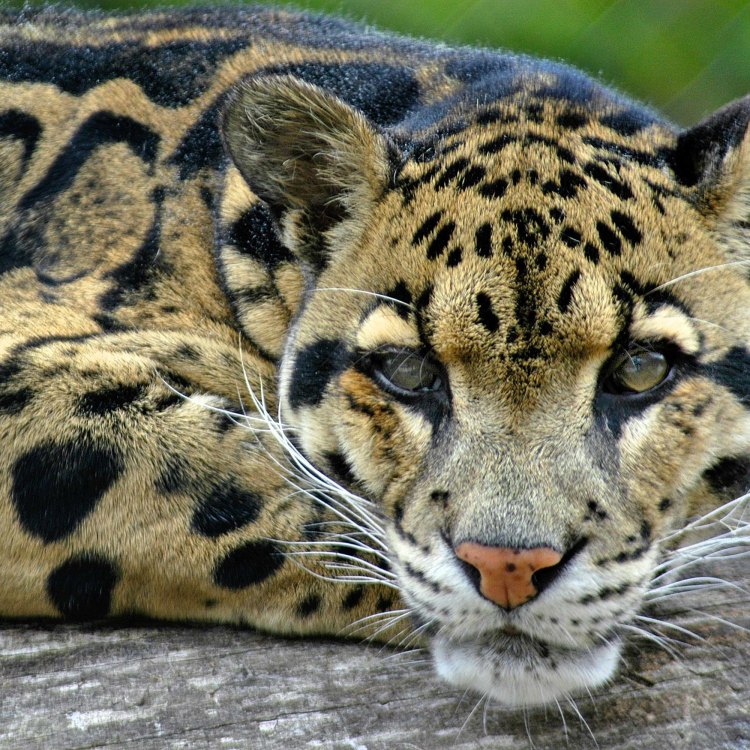
Introduction
Disclaimer: The content provided is for informational purposes only. We cannot guarantee the accuracy of the information on this page 100%. All information provided here may change without prior notice.

